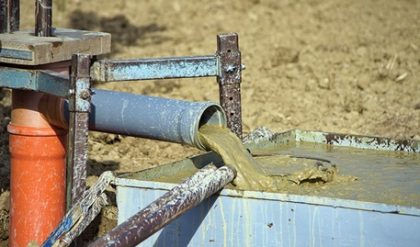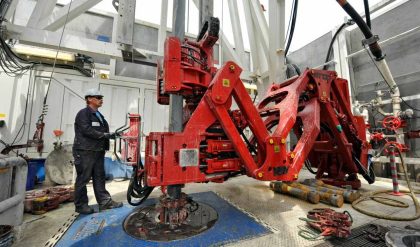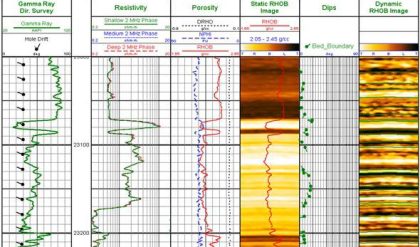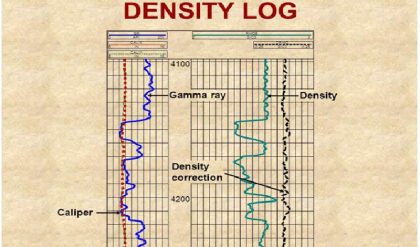Sedimentary rocks are formed by 5 processes, there are erosion, weathering, transport, deposition, and diagenesis process (Boggs, 1991). These 5 processes with 4 types of rocks make up a cycle that is known as sedimentary cycle. The properties of sedimentary rocks such as sediment textures and structures, are formed by chemical, physics and biological processes. Depositional process and the properties of rock has really close genetic relationship. In sedimentology, determining the depositional environments from the properties of sediment or sedimentary rocks is the main purpose and focus. Thus, depositional environments are important and essential not just in sedimentology, but also in other geological disiplines, such as stratigraphy. To gain the depositional environment, we need to do environmental analysis. Environmental analysis is based on properties of rocks that have environmental significances, which are sediment structures, textures, fossils and sedimentary facies associations. From those informations, we can construct the facies model that’s a general summary of the characteristics of certain depositional system. Then, from the characteristic depositional system, we can know the depositional environments of sediment or sedimentary rock.
Definition of Depositional Environments

Schematic diagram showing types of depositional environment. From wikimedia commons.
Depositional environment is part of earth surface that has certain chemical, biology, and physics characteristics where sediments are laid on. There are 3 kinds of depositional environments, they are continental, marginal marine, and marine environments. Each environments have certain characteristic which make each of them different than others. And different depositional environment, will have different structure and texture of sediments.
Terrestrial (Continental) Environments
There are 4 major kinds of terrestrial environments, they are fluvial, desert, lacustrine, and glacial. Fluvial environment is close-connected to the activity of river and also to alluvial plain. Desert environment is close-connected to the role of wind as the agent of transportation and sedimentation. Lacustrine sediments form in lake and glacial sediments form in ice- covered mountain or slope. Each kinds of terrestrial environments will be explaned more below :
Fluvial Systems
Fluvial deposits, also known as alluvial deposits, involves sediments that are formed by activities of river, stream, and associated with gravity flow process. There are 2 kinds of environmental settings from fluvial deposits, which are alluvial fan and river.
Alluvial Fan and Its Classification
Alluvial deposits has gross – cone-like shape and form a convex-up construction in cross section. These deposits consist of abundant gravel-sand detritus on mostly fairly steep depositional slope. They are poorly sorted and are common from the base of mountain range with many sediment supplies. Based on depositional processes, there are 2 kinds of alluvial fans, debris-flow-dominated fans and stream-flow-dominated fans. As the flow of sediments from high relief area (mountain range) comes to a lower area, they are free to spread out with help of gravity. Debris-flow deposits are poorly sorted with the lack of sediment structure, except the reverse graded bedding in their basal parts. They contain various sizes of sediment, and mostly impermeable and nonporous because of the high amount of muddy matrix.
There is also mudflow which is similar to debris flow but mostly contains finer size of sediments than debris flow. Debris flow is also associated with landslide, the landslide is commonly as the source of sediments for debris flow. Stream-flow processes are the principal transport mechanism of stream-flow dominated fans. There are sheetflood and incised channel flow. Sheetflood is a broad expanse of unconfined , sediment-laden runoff water moving downslope , commonly produced by catastrophic discharge. And incised-channel flow takes place through channel, 1-4 m high, incised into the upper fan.
Characteristics of Alluvial Fan
Alluvial fans are cone-shape and have many distributary channels. From the fanhead to the fantoe and also from the cross section, it’s concave upward. Alluvial fan deposits are mostly gravel-sized sediments and show down-fan decreased in grain size and bed thickness and an increase in sediment sorting. The characteristics of debris-flow-dominated fan are the poorly sorted sediment with coarse grain sizes and muddy matrix. But the stream-flow- dominated fans are more sheetlike deposits of finer grain sizes and may have well sorted, laminated, cross-bedded or nearly strcutureless. Mostly, alluvial fan deposits have strongly developed thickening and coarsening-upward succession, which are caused by active fan progradation or outbuilding. But there are some fan deposits have thinning and finning upward succession which are caused by fan retrogradation.






Comments are closed.